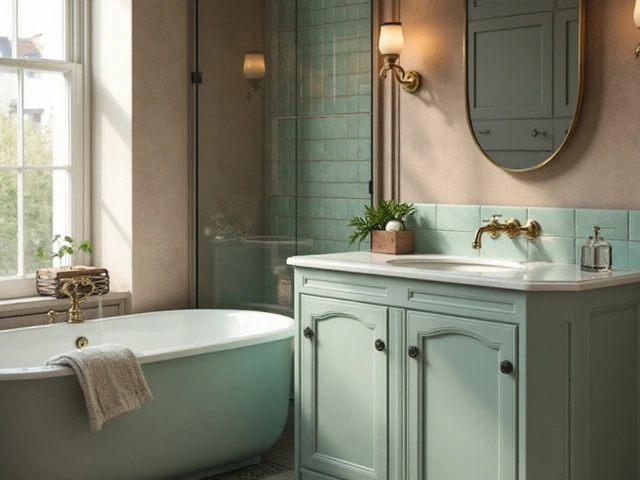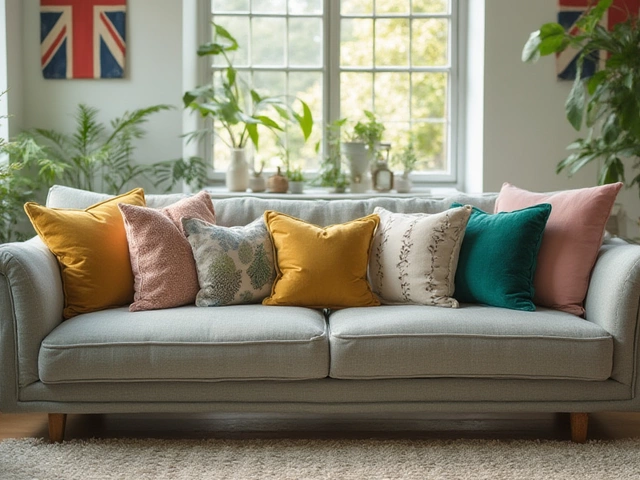Average Couch Markup: Insider Tips to Save Big on Sofas

You’ve probably walked through a furniture store and wondered: “How much are they really making off this couch?” The shiny price tags sometimes feel like a wild guess. Behind that plush surface, there’s a world of numbers, negotiations, and hidden markups most of us never see. Retailers don’t exactly post their formulas on the wall, but if you peek behind the curtain, some surprising truths emerge—and yes, you might decide to hold out for that holiday sale instead of buying today.
How Retailers Calculate Couch Markup
The price you see on that beautiful new sofa isn’t just about fabric and foam. Retailers set their couch markup by weighing a few main things: how much the couch cost them to buy (the wholesale price), how much room they have for profit, hidden costs like shipping and showroom rent, and, let’s be real, what they think shoppers like us are willing to pay.
The typical *average markup on couches* in the furniture world falls between 100% and 400%. Yes, you read that right. If a store pays the manufacturer $600 for that trendy sectional, they might list it in the showroom at anything from $1,200 to $2,400—or even more if it’s a high-end store in pricey real estate. According to the North American Home Furnishings Association, a standard markup for mid-market retailers hovers around 200%–250% above the wholesale cost. At luxury showrooms, markups can easily hit 350–400% on exclusive designer labels.
There’s a reason for these massive jumps. The price tag covers not just the couch and a slice of profit, but staff paychecks, rent or mortgage on that showroom space, marketing costs, free coffee for browsers, returns and warranties, plus hidden losses like unsold inventory. Ever walk into a holiday sale where “EVERYTHING MUST GO!”? They’re often slashing that sliced-thick profit margin to move old stock fast.
Surprising Facts About Sofa Pricing
If you think all couches are marked up the same, think again. Brands, materials, and where you buy make a huge difference. Big-box stores selling own-label sofas (think IKEA) usually have slimmer profits per couch, relying on high sales volume, while boutique retailers or designer-branded stores price in exclusivity—and expectation.
The most shocking fact? The same couch model can carry a wildly different price depending on which store it’s sold in. A 2023 Consumer Reports survey compared identical models from four national chains: the differences in the listed price for the same sofa topped 50%. In one wild example, a best-selling beige sectional sold for $1,400 at a warehouse club, $2,100 at a national chain, and just under $2,700 at a boutique in the city—all from the same manufacturer specs.
Another jaw-dropper: Customization can trigger even fatter markups. Want that couch in a special color, or with a more stain-resistant fabric? It’s not just the materials you’re paying extra for. That special order gives retailers a chance to double the markup and lock you into the sale.
| Store Type | Average Markup | Common Price Range (NZD) |
|---|---|---|
| Big-Box/Chain | 100%-200% | $599-$2,499 |
| Mid-Market Retailer | 200%-300% | $1,099-$3,999 |
| Boutique/Designer | 300%-400% | $2,499-$8,999 |

Hidden Costs Behind the Markup
Those high markups aren’t just about making the owner rich. Every retailer has a mountain of invisible costs stacked behind each couch. Transporting bulky furniture across oceans or by truck is expensive. In 2022 and 2023, global supply-chain issues doubled shipping container costs, which forced retailers to build in extra safety nets. Then there’s the cost of warehousing—storing floor models and inventory until someone falls in love with them.
Showrooms are another biggie. Rent is high in city centers, and keeping that chic, comfortable atmosphere does not come cheap. Salespeople, designers, delivery crews: all of them need paychecks and commissions. Add in marketing—slick Instagram ads, those glossy print catalogues (remember those?), and influencer partnerships—and costs balloon even more.
Plus, returns and warranties are a sneaky expense. When someone decides their new couch looks weird in their living room (or their toddler Ivy spills blackcurrant juice on it on day one...), the cost of pickup, cleaning, repairing, and reselling all falls back on the retailer. Most stores can expect to eat a loss on at least 10% of their yearly sofa sales, so they build that into every price tag as well.
How To Spot and Slash Markups When Sofa Shopping
Now for the fun part: how do you beat the markup game? The best tip: time your purchase around major sales events. New models usually arrive just before winter, so the end-of-summer period is ripe for deals on last year’s styles. Wait for Boxing Day, mid-year, or end-of-season clearances. Many stores set higher ticket prices a few months early—then advertise “50% off!” so it feels like a bargain, even if you’re just paying the usual retail price.
Online-only sellers can have much thinner markups. They don’t pay for showrooms or army-size sales teams, so many (like Article or even The Brick’s online arm) keep prices 10–25% lower than traditional furniture chains. Watch for extra delivery fees, though—they can swallow up those savings fast.
Don’t be shy about negotiating in-store, especially at independent retailers or if you’re buying a floor model. It’s normal to ask, “Is this your best price?” The answer’s often, “Let me see what I can do,” especially if you’re willing to pick up the sofa yourself.
- Check online for identical models at other stores—take screenshots as negotiating ammo.
- Ask about returns and warranties before you buy; a longer guarantee can be a sign the store stands by their quality.
- Look for certified materials like FSC wood or OEKO-TEX fabrics, especially if you want your couch to last through years (and multiple juice spills).
- Don’t rush—couch trends change slowly, and prices often drop after launch season.
Even for limited-edition designer sofas, it never hurts to make an offer below the sticker price. I’ve seen friends score 20% off just by asking nicely and being patient. Sometimes, just offering to leave a review, post a photo on social media, or pay in cash can get you an even sweeter deal.

Why Markups Aren’t Always a Bad Thing
Seeing that 300% markup on your dream couch can sting. But it’s not all smoke and mirrors. Robust markups keep your favorite local stores open, staff paid, and allow them to carry cool new designs every year. In New Zealand, furniture retailers have been hit hard by global shipping shocks and rising rent. Many stores have slimmed staff and carry fewer floor models than pre-pandemic—even though markups look the same on the surface.
That margin also means stores can afford to stand behind products. If your couch frame cracks after six months, you want a business that can honor its warranty, not just disappear overnight. Markups fund after-sales service, extended guarantees, and even home trials—which are just not possible on wafer-thin profits.
The trick is knowing what’s worth paying for and spotting when you’re just shelling out for brand hype or an expensive location. Stick to average markup on couches ranges, and know your limits—there’s a price point where that velvet sectional just isn’t a deal, no matter how dreamy it looks in the store lighting. But there’s also a real joy in finding a couch that’s comfortable, fits your home, and feels like you got your money’s worth—the kind that can handle movie-night popcorn fights and last through years of family living.





